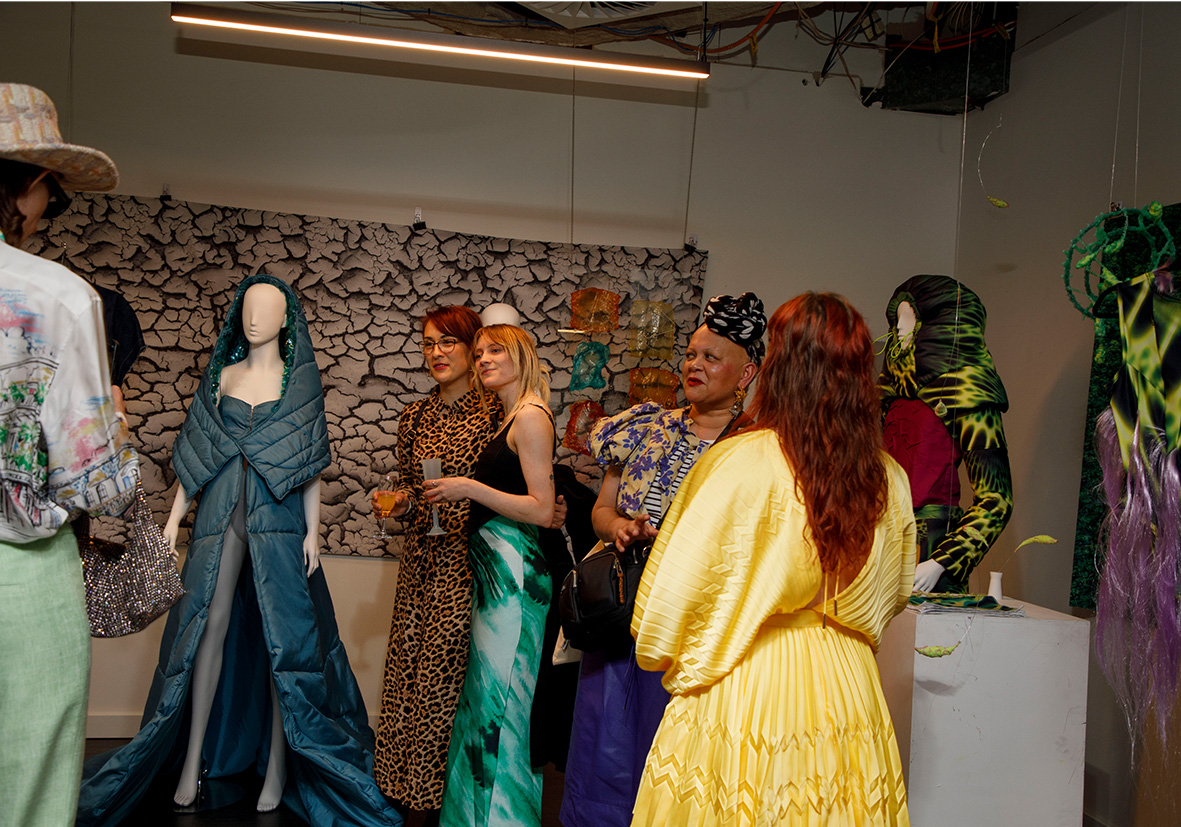6 tips to get ahead in your design career

The design field is bursting with ripe talent. But with this comes increased competition, especially for emerging creatives.
So how do you stand out, be seen and get ahead in a fiercely competitive market? We caught up with our mentors, each respected artists and designers in their own right, to seek their advice on getting – and staying – ahead in your design career.
1. Befriend your design idol (or at least, shout them coffee)
It might be a freelance designer or the director of a formidable design studio you adore. Whichever, reach out to a designer who inspires you and pick their brain.
Talking to established designers is a clever way to gain valuable insights – far from the cookie cutter mould. You can quiz them on their thinking patterns, design ethos, career journey… and so much more.
While every career story is unique, by chatting with individuals who have (most likely) been where you are, you can gain wisdom, support and advice that’s based on lived experience.
Plus, you never know… Your design idol today could be your boss or collaborator tomorrow. Connecting with designers is as much about seeking advice as it is about building relationships.
2. Refine your portfolio
You’ve likely heard it before: ‘Portfolio, portfolio, portfolio!
And while this might sound like tired advice, there’s more than a kernel of truth in it. In fact, thinking deeply and differently about how you craft your portfolio is one of the most important steps to standing out.
Why? Because your portfolio is the first impression a potential employer has of you. It quickly showcases your design capabilities, interests and style.
In a highly saturated market, a strong and distinctive portfolio is essential to being noticed, employed and remembered.
So, how do you enhance your portfolio? It starts with asking yourself these questions:
- What is the creative story I’m trying to tell? (And once I’m clear on that, am I telling it?)
- Does my portfolio have a clear structure?
- Am I presenting a distinctive design style? If not, how can I ensure that I do?
- Do I want to be known for variety or be more niche?
- If variety, am I showing a wide scope of projects (e.g. web, branding, illustration, layout, iconography and campaign)?
- If niche, am I showing a consistent thread of the type of work I would like to do more of?
- Does my portfolio show conceptual thinking, as well as design skills?
- Did I spell check? Is it addressed to the right person? Does it include my contact info?
- Is my portfolio digitally accessible?
3. Seek feedback (and early)
Feedback is your friend – not your foe.
While it can be intimidating to do, requesting feedback on your work is one of the most powerful ways to catapult your career forward. So, show your work often, early, and to as many people as possible.
You should then use this advice to inform how you iterate your work.
Although it’s tempting to seek feedback later in the creative process – especially for perfectionists – by doing this, you’ll miss out on pivotal moments of growth and creative exploration.
4. Focus on quantity; it will lead to quality
In the early stages of your career, you should try to produce as much work as possible.
Through creating a high volume of work, you’ll discover what sticks and what doesn’t, forging the strongest foundation on which to build your design career.
This idea was exemplified in a study led by Jerry Uelsmann, a professor at the University of Florida. To compare the outcomes of focusing on quantity or quality, Uelsmann divided the students in his photojournalism class into two groups: one was to be judged purely on quantity (e.g. submitting 100 photos equates to an A, whereas 80 photos produces a B etc.), while the other was judged on quality (they only had to produce one photo and would be judged on this image).
At the end of the subject, Uelsmann assessed the final images across both groups. Perhaps surprisingly, the quantity group performed better. Through producing tens of images, the quantity group had more practice in understanding the essentials of an effective photo. The quality group, on the other hand, did lots of thinking, but not enough doing.
The takeaway? There is immense value in the creative production process. Experiment with and implement many design solutions to deliver better work, and ultimately, get ahead.
5. Deepen your understanding of psychology and human behaviour
To design well, you need to understand people. Why do they do what they do? How do they process information? What motivates them to act? When do they behave rationally and irrationally?
By deepening your understanding of relevant psychological theories – across human behaviour, cognition, memory and emotional empathy – you can design with greater impact.
So, where should you begin?
Some great starting points are:
- Designing for Emotion by Aaron Walter
- Hooked: How to Build Habit-Forming Products by Nir Eyal
- The Design of Everyday Things by Donald Norman
- Thinking, Fast and Slow by Daniel Kahneman
- Influence: The Psychology of Persuasion by Robert B. Cialdini
6. Stay up-to-date on what it means to be a great designer now
Becoming a designer today is radically different to what it was 20, even 10 years ago. That’s due to the proliferation of the internet, mobile phones, social media, and more recent technologies, such as AI.
And in 5 to 10 years? It will be different once again.
That’s why an essential ingredient of getting ahead is staying on top of what it means to be a designer now. It’s beyond being tuned in to trends, it’s also keeping up with new tools and technologies, as well as emerging concepts.
You can do this by:
- Following industry blogs and podcasts
- Joining online communities and forums
- Completing online courses and webinars
- Experimenting with new tools and resources.
By being proactive with emerging technologies and concepts, you’ll have additional resources in your design toolkit to forge a successful and rewarding career.
Ready to take your design career to the next level? Join us at LCI Melbourne. With a range of study areas in fashion and costume design, visual art, interior design and more, there’s something for every creative.
Reach out today to learn more.






